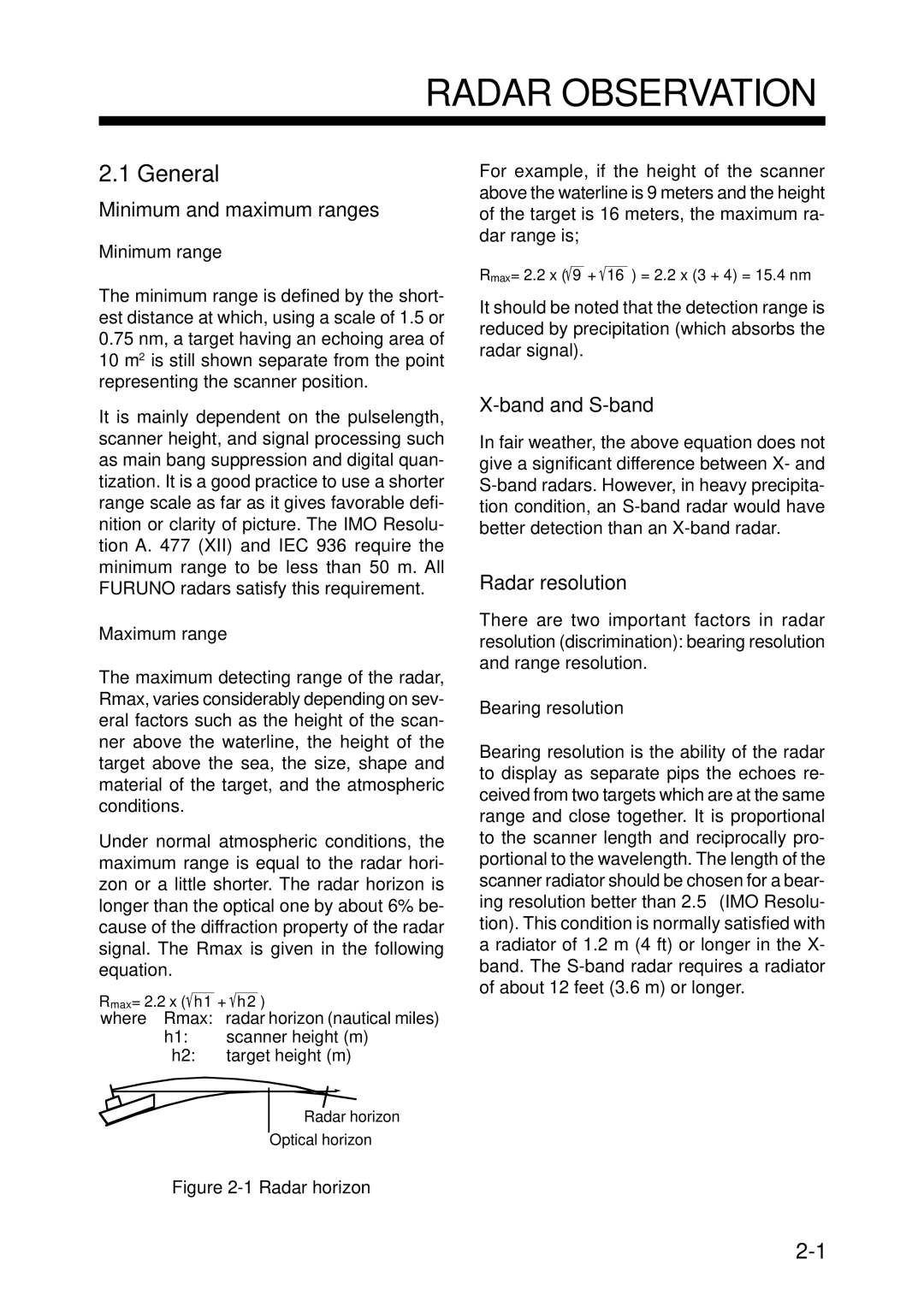
RADAR OBSERVATION
2.1 General
Minimum and maximum ranges
Minimum range
The minimum range is defined by the short- est distance at which, using a scale of 1.5 or
0.75nm, a target having an echoing area of 10 m2 is still shown separate from the point representing the scanner position.
It is mainly dependent on the pulselength, scanner height, and signal processing such as main bang suppression and digital quan- tization. It is a good practice to use a shorter range scale as far as it gives favorable defi- nition or clarity of picture. The IMO Resolu- tion A. 477 (XII) and IEC 936 require the minimum range to be less than 50 m. All FURUNO radars satisfy this requirement.
Maximum range
The maximum detecting range of the radar, Rmax, varies considerably depending on sev- eral factors such as the height of the scan- ner above the waterline, the height of the target above the sea, the size, shape and material of the target, and the atmospheric conditions.
Under normal atmospheric conditions, the maximum range is equal to the radar hori- zon or a little shorter. The radar horizon is longer than the optical one by about 6% be- cause of the diffraction property of the radar signal. The Rmax is given in the following equation.
Rmax= 2.2 x ( h1 + h2 )
where Rmax: | radar horizon (nautical miles) |
h1: | scanner height (m) |
h2: | target height (m) |
Radar horizon |
Optical horizon
Figure 2-1 Radar horizon
For example, if the height of the scanner above the waterline is 9 meters and the height of the target is 16 meters, the maximum ra- dar range is;
Rmax= 2.2 x ( 9 + 16 ) = 2.2 x (3 + 4) = 15.4 nm
It should be noted that the detection range is reduced by precipitation (which absorbs the radar signal).
X-band and S-band
In fair weather, the above equation does not give a significant difference between X- and
Radar resolution
There are two important factors in radar resolution (discrimination): bearing resolution and range resolution.
Bearing resolution
Bearing resolution is the ability of the radar to display as separate pips the echoes re- ceived from two targets which are at the same range and close together. It is proportional to the scanner length and reciprocally pro- portional to the wavelength. The length of the scanner radiator should be chosen for a bear- ing resolution better than 2.5° (IMO Resolu- tion). This condition is normally satisfied with a radiator of 1.2 m (4 ft) or longer in the X- band. The
